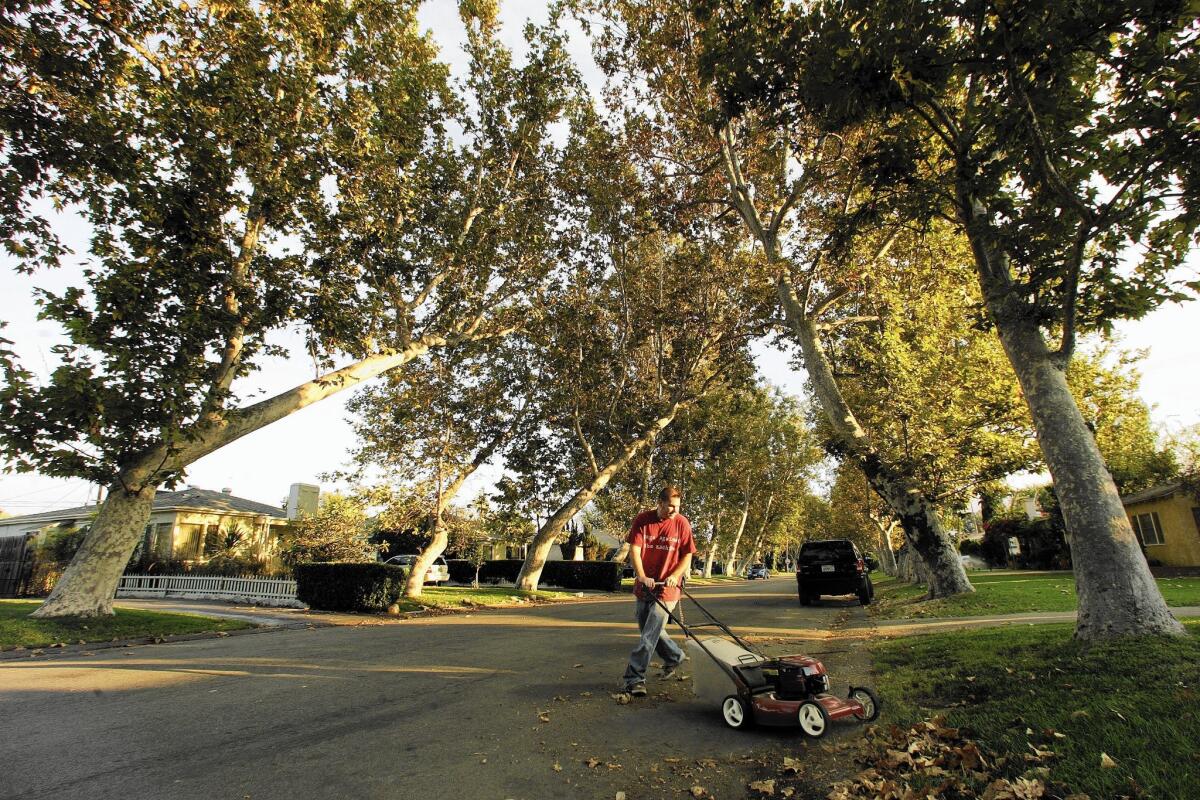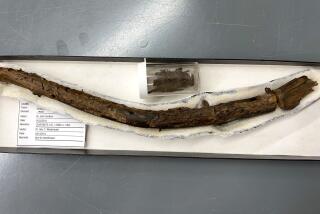Trees are undergoing stress in California’s drought; water with care

- Share via
While dutiful homeowners have been severely limiting — or ceasing — the watering of their lawns and gardens to comply with drought restrictions, one potential fallout is sometimes overlooked: the health of the residential tree canopy.
In July, Mayor Judy Nelson of Glendora, a city that prizes its 18,000 trees, was one of the first public officials to raise this issue. Criticized for the city’s threat to fine a couple who let their lawn go brown (they said they were responding to Gov. Jerry Brown’s call to conserve water), Nelson explained, “We are very concerned that we’re going to be losing trees because people are not watering.”
------------
FOR THE RECORD:
Low-water landscaping: In the Sept. 13 Saturday section, an article about drought-tolerant plantings identified manzanitas and ceonothuses as trees; they are shrubs. Also, the article suggested that sycamores are not native to Southern California, but the Western sycamore is native to the region. —
------------
In fact, the region’s trees are increasingly stressed from lack of deep watering. Warning signs include premature yellowing or browning, early dropping of leaves and lack of vigorous growth. And then there is what might be called the “fading of the green”: A lack of water limits production of green chlorophyll that gives leaves their vibrancy.
Linda Eremita, forestry education manager and senior arborist for TreePeople, says, “I’ve seen trees declining where people have stopped watering lawns” in her Torrance neighborhood. “But it really does vary,” she continues, depending on the type of tree, the soil and area.
The key is to understand a bit of tree physiology and the best method of giving trees what they need.
The starting point is the root system. “The majority of roots are in the top 18 inches of soil,” Eremita says, “but the majority of roots taking in water, nutrients and oxygen are in the top 6 to 8 inches.” Long, slow watering with soaker hoses or in-line emitter drip systems buried under 3 to 4 inches of wood-chip mulch will do the job in summer-like weather, once or twice weekly for younger trees, biweekly for mature trees — not more. Too much water, and the roots cannot take up oxygen, suffocating the tree.
Lawns compete for water, so, in a perfect world, they should be removed to 2 feet beyond the outermost reach of the branches, known as the “drip line.” Irrigation lines should spiral outward, starting at 9 inches from the trunk to 2 feet beyond the drip line.
Unlike sprinklers, which currently are limited on time and date (for example the DWP allows eight minutes three days a week) and can damage a tree’s health if water hits the trunk, there are no general-use limitations on inexpensive soaker hoses. The only limitation on pricier but more effective in-line emitter drip systems is that they cannot exceed a 4-gallon-per-hour outflow.
Also critical, Eremita says, is planting the right kind of tree. Natives such as oaks, manzanitas and redbuds tolerate drought much better than thirstier non-natives such as the evergreen magnolias, jacarandas and sycamores that pepper the city — some even supplied to residents for free by the city through the public-private Million Trees LA initiative, which is now City Plants. TreePeople is working with City Plants to pull certain trees off its list that are not drought tolerant.
::
Plant drought-tolerant trees suited to Southern California’s dryness
Some of the best drought-tolerant native trees for Southern California:
- Native oaks, such as Valley oak, coastal live oak, Engelmann oak, scrub oak
- California or Western redbud
- Native lilac
- Manzanita
Sources for trees and information: Theodore Payne Foundation Nursery www.theodorepayne.org; Rancho Santa Ana Botanic Garden Grow Native Nursery www.rsabg.org/grow-native-nursery, Veterans’ Garden, West Los Angeles






